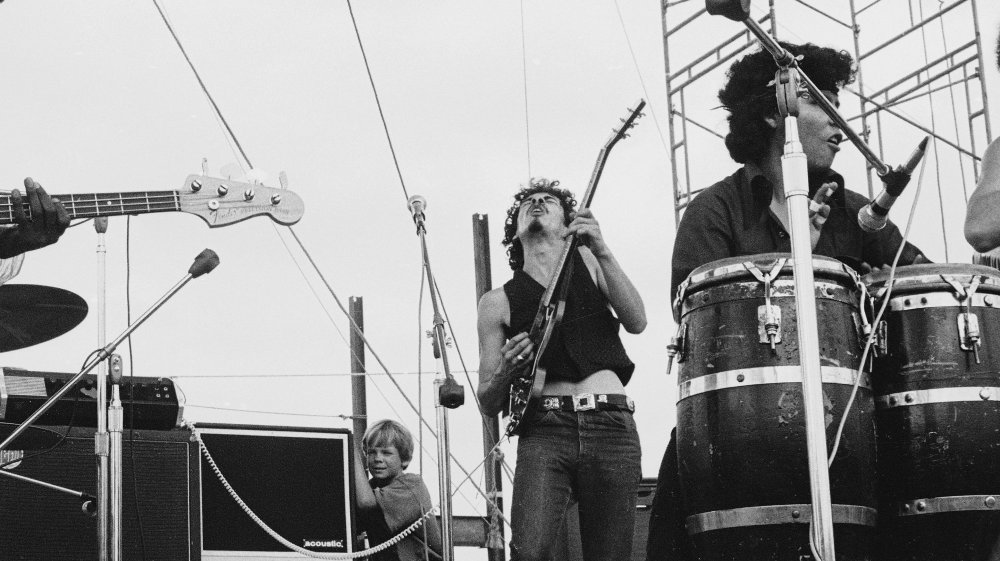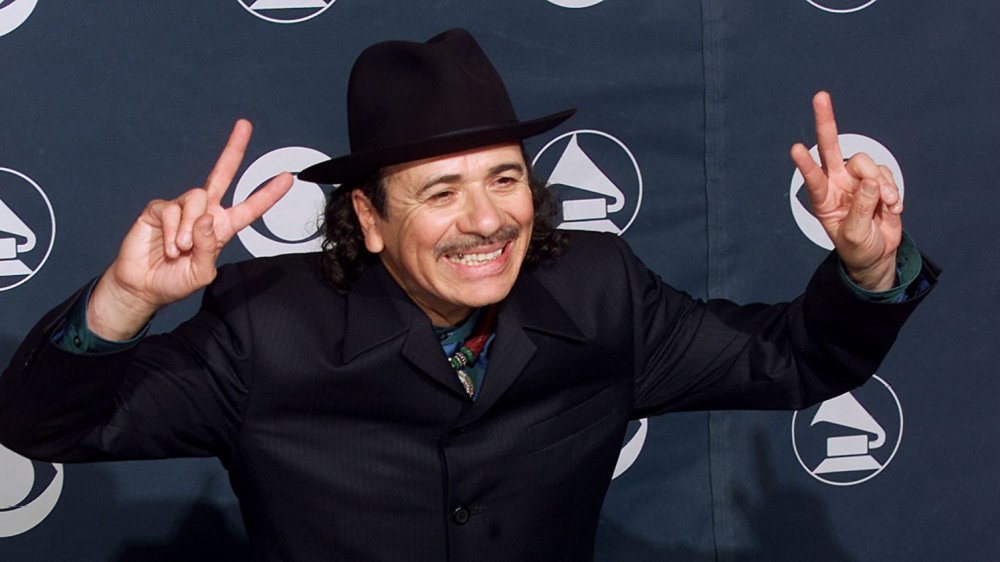The Untold Truth Of Woodstock, According To Carlos Santana
It's been more than fifty years since the residents of Bethel, New York were outnumbered 200 to 1 by a hoard of 400,000 hippies. This mass of peaceful coexistence joined together in a celebration of a common lifestyle and an expression of each individual's ability to spend $18 in advance or $24 at the door. Final tally: only two dead. Not bad.
Today, Woodstock is remembered as an aquarian exposition par excellence — a cultural flashpoint of incalculable significance to an entire generation. The success of the festival has never been replicated. More than any other large-scale gathering in recent history, it evokes images of exactly what it was: a loud, muddy celebration that smelled like the world's biggest art teacher's office.
But there must be more to it than that, right? History is rarely as simple as we like to imagine. What did the performers have to say, besides that everyone was on psychedelics and the ground was damp? What juicy insights did Carlos Santana have to offer?
Carlos nailed it
Basically, the ground was damp, and everyone was on psychedelics. Including Carlos Santana.
That recollection comes courtesy of a retrospective written by the legendary guitar player for Rolling Stone in 1989. Santana described Woodstock as "a spiritual celebration" and "the coming together of all the tribes." He stated "Some people called it a disaster area, but I didn't see nobody in a state of disaster. I saw a lot of people coming together, sharing and having a great time. If that was out of control, then America needs to lose control at least once a week."
Of course, he also mentioned that when he arrived, he took some "strong psychedelics," not expecting to go onstage for another ten hours, but he wound up performing six hours early, doing a set mid-peak. Santana is a pro, and his performance didn't suffer, but he did describe Sly Stone as having steam "literally coming out of his afro" during his set, which is... difficult to verify.

